Coronation 4 November 1380 Role King of France Name Charles VI of France | Burial Saint Denis Basilica | |
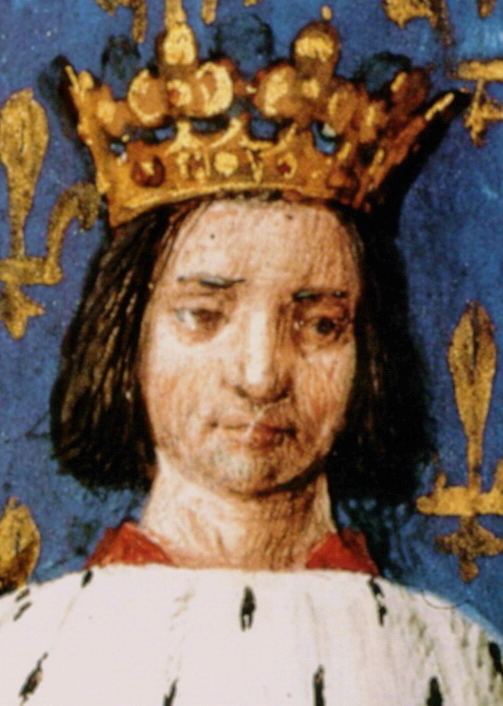 | ||
Reign 16 September 1380 – 21 October 1422 Born 3 December 1368Paris, France ( 1368-12-03 ) Issueamong others... Isabella, Queen of EnglandJoan, Duchess of BrittanyMarie, Prioress of PoissyMichelle, Duchess of BurgundyLouis, Dauphin of ViennoisJohn, Dauphin of ViennoisCatherine, Queen of EnglandCharles VII of France Parents Joanna of Bourbon, Charles V of France Children Charles VII of France, Catherine of Valois Similar People Charles V of France, Charles VII of France, Isabeau of Bavaria, Henry V of England, Louis I - Duke of Orleans | ||
Siblings Louis I, Duke of Orleans | ||
Charles vi of france
Charles VI (3 December 1368 – 21 October 1422), called the Beloved (French: le Bien-Aimé) and the Mad (French: le Fol or le Fou), was King of France from 1380 to his death. He was a member of the House of Valois.
Contents
- Charles vi of france
- History of Charles VI of France The Mad King Joan of Arc in Hindi Urdu
- Early life
- Regency
- Mental illness
- Bal des Ardents
- Expulsion of the Jews 1394
- Struggles for power
- Wars with Burgundy and England
- The English invasion and death
- Marriage and issue
- References

Charles VI was only 11 when he inherited the throne in the midst of the Hundred Years' War. The government was entrusted to his four uncles: Philip the Bold, Duke of Burgundy; John, Duke of Berry; Louis I, Duke of Anjou; and Louis II, Duke of Bourbon. Although the royal age of majority was fixed at 14, the dukes maintained their grip on Charles until he took power at the age of 21.
During the rule of his uncles, the financial resources of the kingdom, painstakingly built up by his father, Charles V, were squandered for the personal profit of the dukes, whose interests were frequently divergent or even opposed. As royal funds drained, new taxes had to be raised, which caused several revolts.
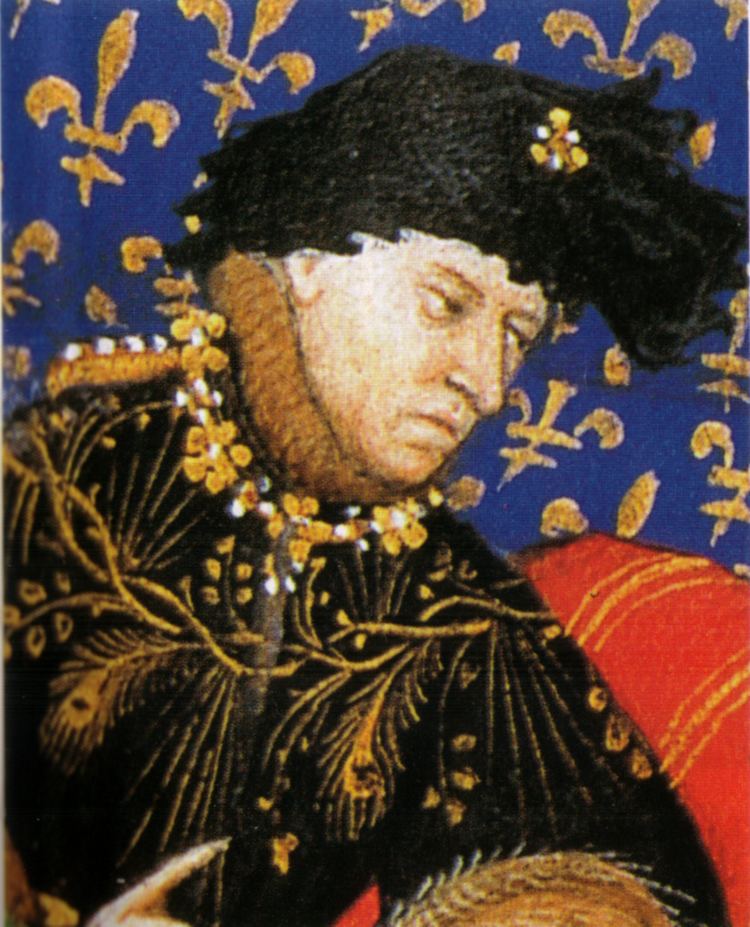
In 1388 Charles VI dismissed his uncles and brought back to power his father's former advisers, known as the Marmousets. Political and economic conditions in the kingdom improved significantly, and Charles earned the epithet "the Beloved". But in August 1392 en route to Brittany with his army in the forest of Le Mans, Charles suddenly went mad and slew four knights and almost killed his brother, Louis of Orléans.
From then on, Charles' bouts of insanity became more frequent and of longer duration. During these attacks, he had delusions, believing he was made of glass or denying he had a wife and children. He could also attack servants or run until exhaustion, wailing that he was threatened by his enemies. Between crises, there were intervals of months during which Charles was relatively sane. However, unable to concentrate or make decisions, political power was taken away from him by prominent French nobles who were also his close relatives (the princes of the blood), whose rivalries and disputes would cause much chaos and conflict in France.
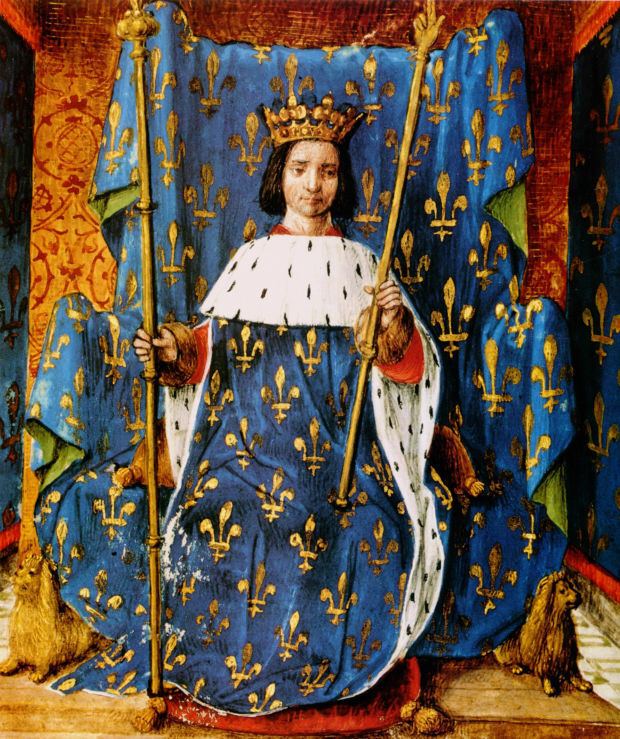
A fierce struggle for power developed between Louis of Orléans, the king's brother, and John the Fearless, Duke of Burgundy, the son of Philip the Bold and the king's cousin. When John instigated the murder of Louis in November 1407, the conflict degenerated into a civil war between the Armagnacs (supporters of the House of Valois) and the Burgundians. John offered large parts of France to King Henry V of England, who was still at war with the Valois monarchy, in exchange for his support. After the assassination of John the Fearless, his son Philip the Good led Charles the Mad to sign the infamous Treaty of Troyes (1420), which disinherited his offspring and recognized Henry V as his legitimate successor on the throne of France.
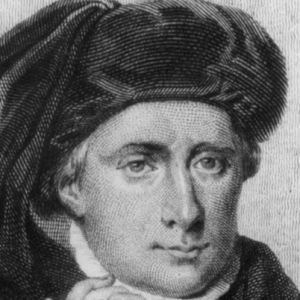
When Charles VI died, the succeession was claimed by his son Charles VII, who found the Valois cause in a desperate situation.
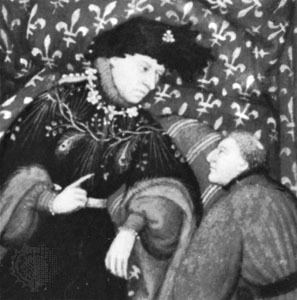
History of Charles VI of France / The Mad King / Joan of Arc in Hindi & Urdu
Early life
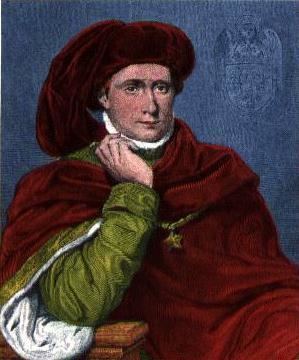
Charles was born in Paris, in the royal residence of the Hôtel Saint-Pol, on 3 December 1368, the son of the king of France Charles V, of the House of Valois, and of Joan of Bourbon. As heir to the French throne, his older brothers having died before he was born, Charles had the title Dauphin of France. At his father's death on 16 September 1380, he inherited the throne of France. His coronation took place on 4 November 1380, at Reims Cathedral. Although the royal age of majority was 14 (the "age of accountability" under Roman Catholic canon law), Charles did not terminate the regency and take personal rule until 1388.
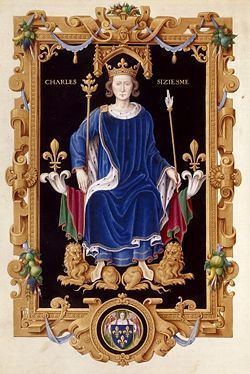
He married Isabeau of Bavaria on 17 July 1385, when he was 17 and she was 14 (and considered an adult at the time). Isabeau had 12 children, most of whom died young. Isabeau's first child, named Charles, was born in 1386, and was Dauphin of Viennois (heir apparent), but survived only 3 months. Her second child, Joan, was born on 14 June 1388, but died in 1390. Her third child, Isabella, was born in 1389. She was married to Richard II, King of England in 1396, at the age of 6, and became Queen of England. Richard died in 1400 and they had no children. Richard's successor, Henry IV, wanted Isabella to then marry his son, 14-year-old future king Henry V, but she refused. She married again in 1406, this time to her cousin, Charles, Duke of Orléans, at the age of 17. She died in childbirth at the age of 19.
Isabeau's fourth child, Joan, was born in 1391, and was married to John VI, Duke of Brittany in 1396, at an age of 5; they had children. Isabeau's fifth child born in 1392 was also named Charles, and was Dauphin. Charles VI then became insane. The young Charles was betrothed to Margaret of Burgundy in 1396, but died at the age of 9. Isabeau's sixth child, Mary, was born in 1393. She was never married, and had no children. Isabeau's seventh child, Michelle, was born in 1395. She was engaged to Philip, son of John the Fearless, Duke of Burgundy, in 1404 (both were then aged 8) and they were married in 1409, aged 14. She had one child who died in infancy, before she died in 1422, aged 27.
Isabeau's eighth child, Louis, was born in 1397, and was also Dauphin. He was married to the Margaret of Burgundy who had been betrothed to brother Charles, but they did not have any children before he died in 1415, aged 18.
Isabeau's ninth child, John, was born in 1398, and was also Dauphin from 1415, after the death of his brother Louis. He was married to Jacqueline, Countess of Hainaut in 1415, when aged 17, but they did not have any children before he died in 1417, aged 19. Isabeau's tenth child, Catherine, was born in 1401. She was married firstly to Henry V, King of England in 1420, and they had one child, who became Henry VI of England. Henry V died suddenly in 1422. Catherine may then have secretly married Owen Tudor in 1429, and she also had children with him. She died in 1437, aged 36.
Isabeau's eleventh child, also named Charles, was born in 1403. In 1413, Queen Isabeau and Yolande of Aragon finalized a marriage contract between Charles and Yolande's daughter Marie of Anjou, Charles' second cousin. Dauphin Louis and then Dauphin John died while in the care of John the Fearless, the Duke of Burgundy and regent for the insane King Charles. Yolande became the protectress of Charles, who became the new Dauphin in 1417. She refused Queen Isabeau's orders to return Charles to the French Court, reportedly replying, "We have not nurtured and cherished this one for you to make him die like his brothers or to go mad like his father, or to become English like you. I keep him for my own. Come and take him away, if you dare." After the death of Charles VI in 1422, the English regents claimed the crown of France for Henry VI, then aged 1, according to the terms of the Treaty of Troyes. However, Charles, aged 19, repudiated the treaty and claimed and became King of France, as Charles VII, sparking fresh fighting with the English. He married Marie of Anjou in 1422, and they had many children, most of which died at a very early age. He died in 1461, the longest living descendant of Isabeau.
Isabeau's twelfth and the last child, Philip, was born in 1407, but died shortly after.
Regency
Charles VI was only 11 years old when he was crowned King of France. Although Charles was entitled to rule personally from the age of 14, the dukes maintained their grip on power until Charles terminated the regency at the age of 21.
During his minority, France was ruled by Charles' uncles, as regents. The regents were Philip the Bold, Duke of Burgundy, Louis I, Duke of Anjou, John, Duke of Berry, and Louis II, Duke of Bourbon, Charles VI's maternal uncle. Philip took the dominant role during the regency. Louis of Anjou was fighting for his claim to the Kingdom of Naples after 1382, dying in 1384, John of Berry was interested mainly in the Languedoc, and not particularly interested in politics; whilst Louis of Bourbon was a largely unimportant figure, due to his personality (he showed signs of mental instability) and his status (since he was not the son of a king).
During the rule of his uncles, the financial resources of the kingdom, painstakingly built up by his father Charles V, were squandered for the personal profit of the dukes, whose interests were frequently divergent or even opposing. During that time, the power of the royal administration was strengthened and taxes re-established. The latter policy represented a reversal of the deathbed decision of the king's father Charles V to repeal taxes, and led to tax revolts, known as the Harelle. Increased tax revenues were needed to support the self-serving policies of the king's uncles, whose interests were frequently in conflict with those of the crown and with each other. The Battle of Roosebeke (1382), for example, brilliantly won by the royal troops, was prosecuted solely for the benefit of Philip of Burgundy. The treasury surplus carefully accumulated by Charles V was quickly squandered.
Charles VI brought the regency to an end in 1388, taking up personal rule. He restored to power the highly-competent advisors of Charles V, known as the Marmousets, who ushered in a new period of high esteem for the crown. Charles VI was widely referred to as Charles the Beloved by his subjects.
Mental illness
The early successes of the sole rule of Charles VI quickly dissipated as a result of the bouts of psychosis he experienced beginning in his mid-twenties. Mental illness may have been passed on for several generations through his mother, Joanna of Bourbon. Although still called by his subjects Charles the Beloved, he became known also as Charles the Mad from then on.
Charles's first known episode occurred in 1392 when his friend and advisor, Olivier de Clisson, was the victim of an attempted murder. Although Clisson survived, Charles was determined to punish the would-be assassin, Pierre de Craon, who had taken refuge in Brittany. John V, Duke of Brittany was unwilling to hand him over, so Charles prepared a military expedition.
Contemporaries said Charles appeared to be in a "fever" to begin the campaign and disconnected in his speech. Charles set off with an army on 1 July 1392. The progress of the army was slow, which nearly drove Charles into a frenzy of impatience.
As the king and his escort were traveling through the forest near Le Mans on a hot August morning, a barefoot leper dressed in rags rushed up to the King's horse and grabbed his bridle. "Ride no further, noble King!" he yelled: "Turn back! You are betrayed!" The king's escorts beat the man back, but did not arrest him, and he followed the procession for half an hour, repeating his cries.
The company emerged from the forest at noon. A page who was drowsy from the sun dropped the king's lance, which clanged loudly against a steel helmet carried by another page. Charles shuddered, drew his sword and yelled "Forward against the traitors! They wish to deliver me to the enemy!" The king spurred his horse and began swinging his sword at his companions, fighting until one of his chamberlains and a group of soldiers were able to grab him from his mount and lay him on the ground. He lay still and did not react, but fell into a coma. The king had killed a knight known as "The Bastard of Polignac" and several other men.
Periods of mental illness continued throughout the king's life. During one in 1393, he could not remember his name and did not know he was king. When his wife came to visit, he asked his servants who she was and ordered them to take care of what she required so that she would leave him alone. During an episode in 1395–96 he claimed he was Saint George and that his coat of arms was a lion with a sword thrust through it. At this time, he recognized all the officers of his household, but did not know his wife nor his children. Sometimes he ran wildly through the corridors of his Parisian residence, the Hôtel Saint-Pol, and to keep him inside, the entrances were walled up. In 1405, he refused to bathe or change his clothes for five months. His later psychotic episodes were not described in detail, perhaps because of the similarity of his behavior and delusions. Pope Pius II, who was born during the reign of Charles VI, wrote in his Commentaries that there were times when Charles thought that he was made of glass, and this caused him to protect himself in various ways so that he would not break. He reportedly had iron rods sewn in his clothes, so that he would not shatter if he came into contact with another person. This condition has come to be known as glass delusion.
Charles VI's secretary, Pierre Salmon, spent much time in discussions with the king while he was intermittently psychotic. In an effort to find a cure for the king's illness, stabilize the turbulent political situation, and secure his own future, Salmon supervised the production of two distinct versions of the beautifully illuminated guidebooks to good kingship known as Pierre Salmon's Dialogues.
Bal des Ardents
On 29 January 1393, a masked ball, which became known as the Bal des Ardents ("Ball of the Burning Men") because of the tragedy that ensued, had been organized by Isabeau of Bavaria to celebrate the wedding of one of her ladies-in-waiting at the Hôtel Saint-Pol. At the suggestion of Huguet de Guisay, the king and four other lords dressed up as wild men and danced about. They were dressed "in costumes of linen cloth sewn onto their bodies and soaked in resinous wax or pitch to hold a covering of frazzled hemp, so that they appeared shaggy & hairy from head to foot". At the suggestion of one Yvain de Foix, the king commanded that the torch-bearers were to stand at the side of the room. Nonetheless, the king's brother Louis I, Duke of Orléans, who had arrived late, approached with a lighted torch in order to discover the identity of the masqueraders, and he set one of them on fire. There was panic as the fire spread. The Duchess of Berry threw the train of her gown over the king. Several knights who tried to put out the flames were severely burned. Four of the wild men perished: Charles de Poitiers, son of the Count of Valentinois; Huguet de Guisay; Yvain de Foix; and the Count of Joigny. Another – Jean, son of the Lord of Nantouillet – saved himself by jumping into a dishwater tub.
Expulsion of the Jews, 1394
On 17 September 1394, Charles suddenly published an ordinance in which he declared, in substance, that for a long time he had been taking note of the many complaints provoked by the excesses and misdemeanors that the Jews had committed against Christians, and that the prosecutors, having made several investigations, had discovered many violations by the Jews of the agreement they had made with him. Therefore, he decreed, as an irrevocable law and statute, that thenceforth no Jew should dwell in his domains ("Ordonnances", vii. 675). According to the Religieux de St. Denis, the king signed this decree at the insistence of the queen ("Chron. de Charles VI." ii. 119). The decree was not immediately enforced, a respite being granted to the Jews in order that they might sell their property and pay their debts. Those indebted to them were enjoined to redeem their obligations within a set time, otherwise their pledges held in pawn were to be sold by the Jews. The provost was to escort the Jews to the frontier of the kingdom. Subsequently, the king released the Christians from their debts.
Struggles for power
With Charles VI mentally ill, from 1393 his wife Isabeau presided over a regency counsel, on which sat the grandees of the kingdom. Philip the Bold, Duke of Burgundy, who acted as regent during the king's minority (from 1380 to 1388), was a great influence on the queen (he had organized the royal marriage during his regency). Influence progressively shifted to Louis I, Duke of Orléans, the king's brother, another contender for power, and it was suspected, the queen's lover. Charles VI's other uncles were less influential during the regency: Louis II of Naples was still engaged managing the Kingdom of Naples, and John, Duke of Berry, served as a mediator between the Orléans party (what would become the Armagnacs) and the Burgundy party (Bourguignons). The rivalry would increase bit by bit and in the end result in outright civil war.
The new regents dismissed the various advisers and officials Charles had appointed. On the death of Philip the Bold in April 1404, his son John the Fearless took over the political aims of his father, and the feud with Louis escalated. John, who was less linked to Isabeau, again lost influence at court.
Wars with Burgundy and England
In 1407, Louis of Orléans was murdered in the rue Vieille du Temple in Paris. John did not deny responsibility, claiming that Louis was a tyrant who squandered money. Louis' son Charles, the new Duke of Orléans, turned to his father-in-law, Bernard VII, Count of Armagnac, for support against John the Fearless. This resulted in the Armagnac-Burgundian Civil War, which lasted from 1407 until 1435, beyond Charles' reign, though the war with the English was still in progress.
With the English taking over much of the country, John the Fearless sought to end the feud with the royal family by negotiating with the Dauphin Charles, the king's heir. They met at the bridge at Montereau on 10 September 1419, but during the meeting, John was killed by Tanneguy du Chastel, a follower of the Dauphin. John's successor, Philip the Good, the new Duke of Burgundy, threw in his lot with the English.
The English invasion and death
Charles VI's reign was marked by the continuing conflict with the English, known as the Hundred Years' War. An early attempt at peace occurred in 1396 when Charles' daughter, the almost seven-year-old Isabella of Valois, married the 29-year-old Richard II of England. By 1415, however, the feud between the French royal family and the House of Burgundy led to chaos and anarchy throughout France that Henry V of England was eager to take advantage of. Henry led an invasion that culminated in the defeat of the French army at the Battle of Agincourt in October.
In 1420, the Treaty of Troyes was an agreement signed by Henry V of England and Charles VI of France, recognizing Henry as Charles' successor, and stipulating that Henry's heirs would succeed him on the throne of France. It disinherited the Dauphin Charles (with further claim, in 1421, that the young Charles was illegitimate). It also betrothed Charles VI's daughter, Catherine of Valois, to Henry V (see English Kings of France). The treaty disinheriting the Dauphin of France in favor of the English crown was a blatant act against the interests of France. The Dauphin sealed his fate, in the eyes of the mad king, when he declared himself regent, seized royal authority, and refused to obey the king's order to return to Paris. When the Treaty of Troyes was finalized in May 1420, the Dauphin Charles was only 17 years old.
Charles VI died on 21 October 1422 in Paris, at the Hôtel Saint-Pol. He was interred in Saint Denis Basilica, where his wife Isabeau of Bavaria would join him after her death in September 1435.
Upon the death of Charles VI, his infant grandson, who had become King Henry VI of England at the death of his own father in August 1422, was, according to the Treaty of Troyes, also King of France, and his coronation as such took place at the cathedral of Notre Dame de Paris on 26 December 1431. In the meantime, the Dauphin Charles, who had settled in Bourges, Paris being occupied by the English-Bourguignons since 29 May 1418, had to wait the arrival of Joan of Arc to be taken to the cathedral of Reims for his coronation as Charles VII, King of France on 17 July 1429. During his reign, Charles VII, the (disinherited) son of Charles VI, became known as "Charles the Victorious".
Marriage and issue
Charles VI married Isabeau of Bavaria (ca. 1371 – 24 September 1435) on 17 July 1385. She gave birth to 12 children:
He also had one illegitimate child by Odette de Champdivers: Marguerite, bâtarde de France (d. ca.1458).
